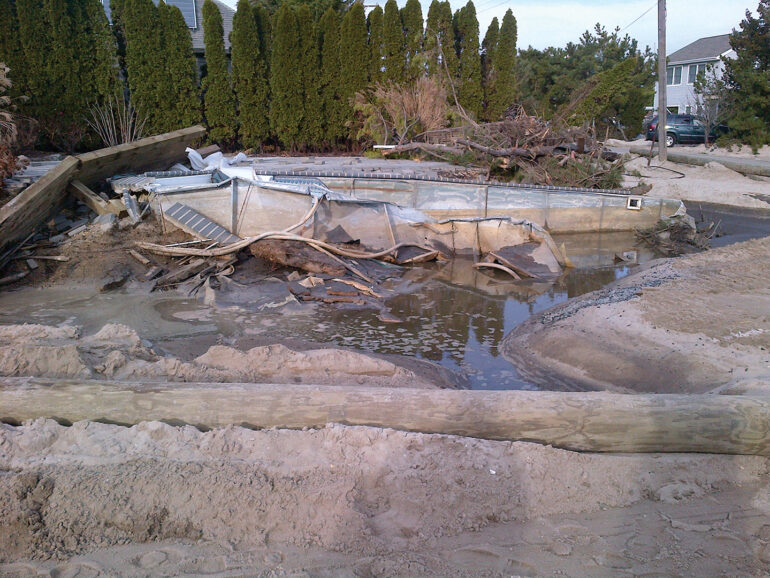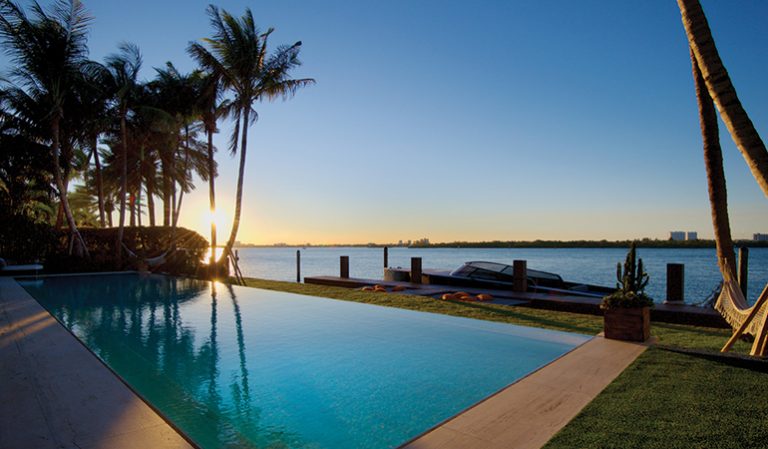Building a Greener Future
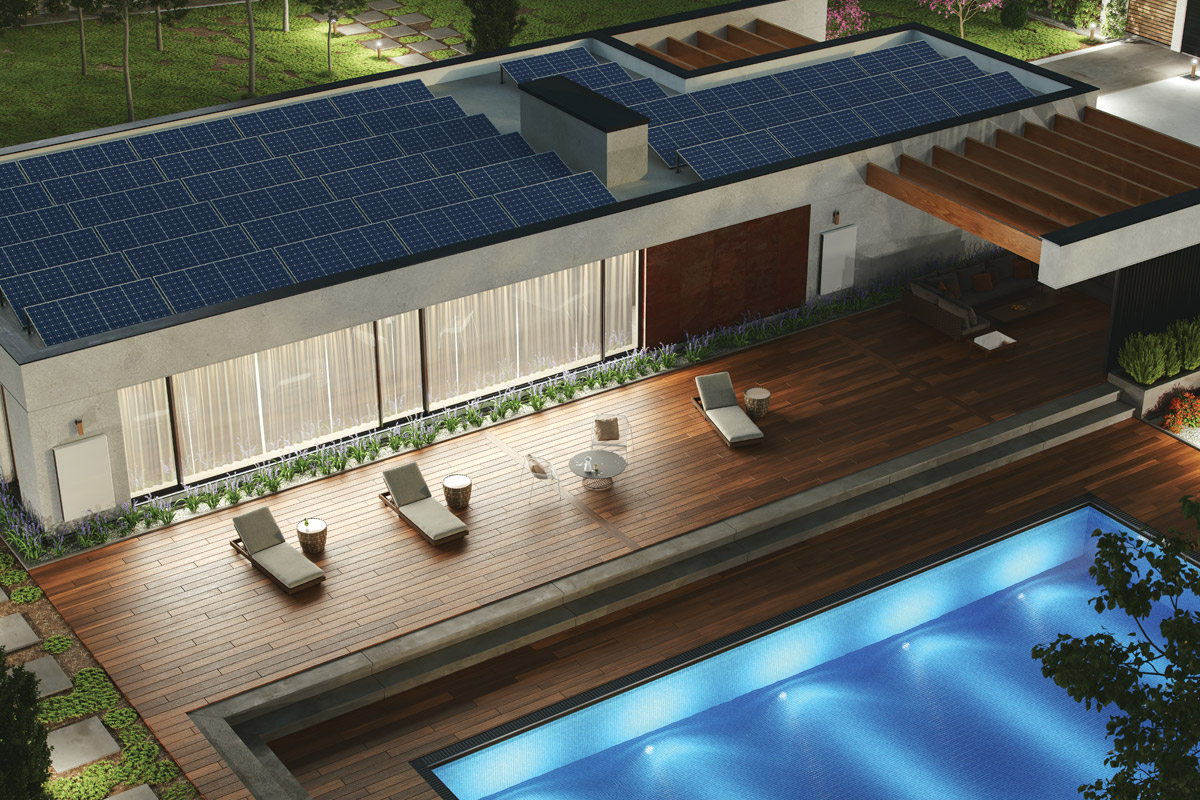
Energy efficiency in pool construction and maintenance
Whether they’re breaking ground on a new build or improving maintenance practices, pool pros who focus on energy efficiency reduce environmental impact and help customers save money without sacrificing time or comfort.
“As stewards of the pool industry, it’s incumbent upon us to prioritize sustainability in every facet of our operations,” says Brad Parker, vice president of marketing for Fluidra North America. “By embracing innovation, fostering collaboration and championing best practices, we can collectively propel the sector toward a more sustainable future.”
Everything from the building blocks of a pool to the pump and lighting can contribute to sustainability, and many pool pros are already putting these ideas into practice.
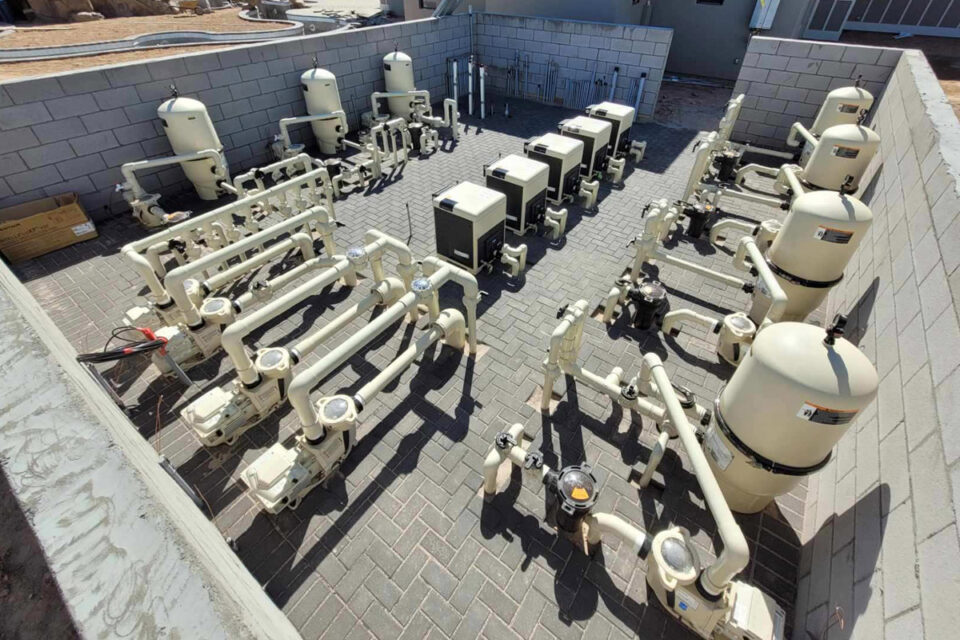
Plumbing and heating
Pool pads can be a big source of energy consumption for homeowners.
Rocco Russo, regional trainer for Fluidra, says smart, deliberate hydraulic design can decrease the pressure a pump needs to generate to deliver the flow rate.
“The filter pump is the heart of a swimming pool’s filtration system,” Russo says. “The challenge with hydraulic efficiency is to slow down the electric meter while allowing the pump to deliver the target flow rate. How do you keep the swimming pool clean and safe while decreasing amperage use?”
Head pressure is the pressure required to move clean water back into the pool. For the pump to generate increasing pressure, it must draw more amperage, which makes the electric meter spin faster.
Russo explains that pumps are designed to discharge water, not to draw water in. When they’re forced to “pull a lift,” excess amperage is required to keep the pump operating normally.
For an efficient plumbing system, Russo recommends starting with oversized suction lines, preferably placing the pump in flooded suction. “Let gravity provide the incoming water, so the pump doesn’t have to work to do so,” Russo says.
Similarly, a heat pump is designed to work with the heat that is already present rather than create heat itself.
The technology [of heat pumps] is by nature energy efficient… They are not actually generating heat but are moving heat from one place to another.”
Joshua Hoots, Hayward Holdings
“The technology [of heat pumps] is by nature energy efficient,” says Joshua Hoots, director of product management at Hayward Holdings. “Heat pumps pull heat out of the ambient air or out of the pool water through the refrigeration cycle. They are not actually generating heat but are moving heat from one place to another.”
The efficiency of heat pumps can be measured by the COP rating, or coefficient of performance. For example, if a heat pump is rated at 5.7 COP — the minimum rating of Hayward’s heat pumps, Hoots says — for every unit of energy used to run the heat pump, it will move 5.7 units of energy into or out of the pool, depending on if its heating or cooling.
“It means, at the very least, a heat pump is going to be 570% efficient,” Hoots says.
Terry Doyle, product manager for heating products at Fluidra, says heat pumps are more thermally efficient than gas heaters.
“One of the biggest misconceptions people have about heat pumps is that they aren’t as efficient as a gas heater,” Doyle says. “When they say it’s not efficient, they mean it’s not efficient time-wise.”
According to the Department of Energy, a gas heater will heat a pool faster, but pool owners will pay a price when the energy bill comes. A heat pump, however, will provide an even and consistent heat once it reaches an ideal temperature and will operate with much less effort. The DOE confirms that if an average heat pump is run year-round at 85 degrees, pool owners will see up to $400 a year in energy savings.
Doyle says heat pumps will still give consumers more for their money, saying that for every dollar of energy put into a gas heater, only about 84 cents worth of heat is reaped. In contrast, for every dollar of energy put into a heat pump, Doyle says a customer could get $5-$6 of heat out of it, depending on the unit.
But the math doesn’t make sense for a lot of pool professionals in California, where electricity costs are high and the state is imposing a ban on new gas heaters starting in 2027. While heat pumps may be more energy efficient, pool professionals say that excluding a clean source of energy like natural gas and putting more strain on the electric power grid is not a net gain for consumers or the environment.
“Heat pumps will not work effectively for most California consumers,” says David Van Brunt, who owns a pool service company in California and creates pool education content. “They will cost the consumer more in utility costs if they do not have solar panels to offset the higher electricity usage. Also, if you can no longer purchase gas heaters and need to retrofit your equipment pad, expect to spend $2,500 or more to have a dedicated 230 breaker installed.”
Hoots says Hayward offers two smaller units in its HeatPro series that can be hooked up to 40-amp breakers to help reduce the cost for retrofit situations.
“The bottom line is that the state hurts consumers, builders and manufacturers by focusing on gas heaters rather than solving environmental issues,” Van Brunt says. “It’s another regulation that looks good on paper and will get much applause but negatively impacts the swimming pool industry.”
Parker says investing in the right equipment is crucial for a sustainable pool. He suggests using more high-efficiency pumps and heaters; installing supplemental or secondary sanitizers like UV or AOP to reduce chemical use; implementing smart controls for optimized operations; and prioritizing proper maintenance with water management practices. “This will not only reduce operational costs and enhance user experience but also reflects a commitment to environmental stewardship and sustainability,” Parker says.
Energy-efficient variable-speed pumps have helped make pools more sustainable, Parker says. Before variable-speed pumps, single- or two-speed pumps were often the second highest energy-consuming appliance in a household and could use up to a few thousand-kilowatt hours per year.
“Thanks to various state and federal regulations as well as growing knowledge within the industry and consumers’ demand for energy efficiency, pool professionals have shifted toward variable-speed, not only for performance but also for the added cost savings,” Parker says.
Hayward also offers a variable-speed heat pump, leveraging the same technology that has been put into variable-speed pumps over the last several years.
“As they run slower, they become extremely efficient and quieter,” Hoots says.
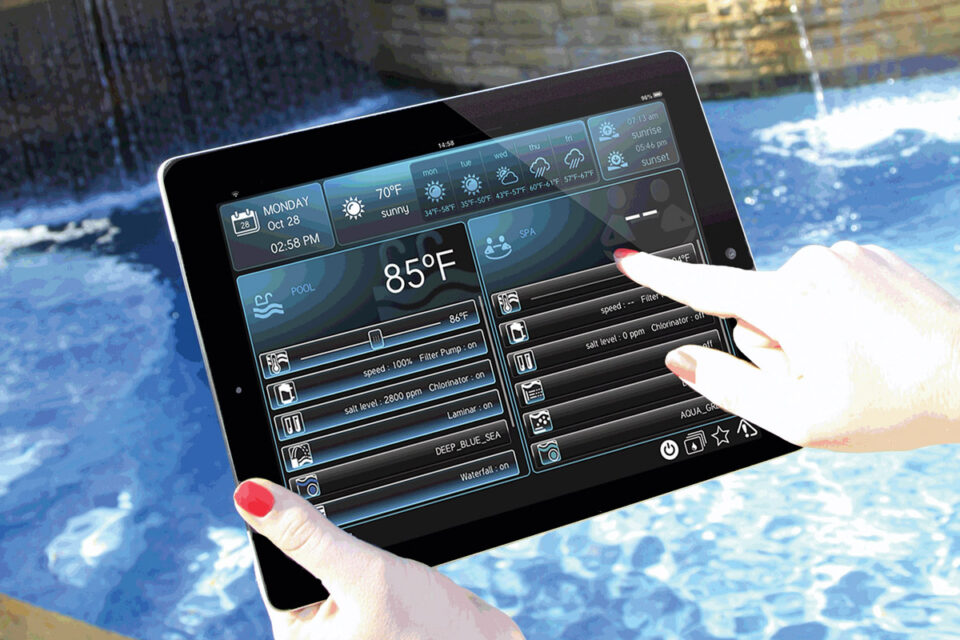
Lighting systems and automation
Last year, the Department of Energy issued lighting regulations aimed at reducing energy consumption and greenhouse gas emissions by prohibiting the sale of some incandescent lights.
In response, Fluidra stopped manufacturing incandescent lights and switched to only making LED lights, which can provide up to 87% energy savings (comparing a 500W white incandescent light and a 65W white LED light with comparable lumen output) for homeowners.
LED lighting coupled with automation systems can help homeowners save even more.
Jeff Zillmer, product manager for lighting at Pentair Pool in Cary, North Carolina, says Pentair’s pool and spa lighting products can be tied into its automation systems and controlled remotely.
Pentair’s Color Sync Controller for Pentair Color LED Pool Lights also has an energy-saver mode that will notify the user if their lights have been on for a certain amount of time and includes sunset mode, which uses the pool’s location to automatically turn pool lights on at sunset.
Automation, schedules and high-efficiency LED lighting not only make a pool beautiful but energy-efficient as well.”
Jeff Zillmer, Pentair
“I would encourage dealers, pool pros and pool owners to understand the full functionality of their lighting and automation systems, which will allow them to take full advantage of the energy-saving features,” Zillmer says. “Automation, schedules and high-efficiency LED lighting not only make a pool beautiful but energy-efficient as well.”
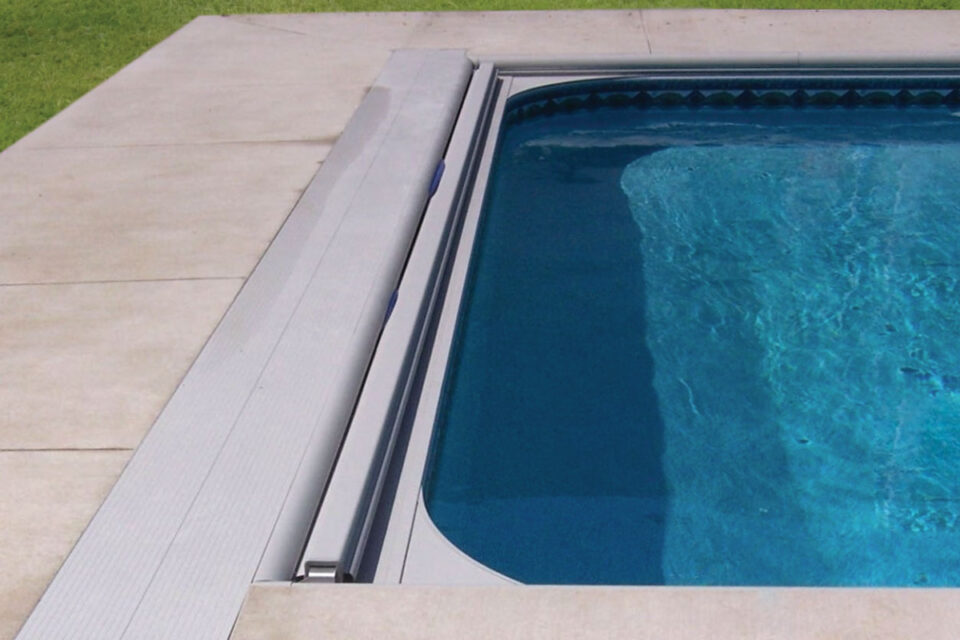
Pool covers: The real MVPs
While the pool finish color may make a small difference in efficiency and using insulated concrete forms to build your pool can potentially help retain heat in northern climates, the majority of heat loss comes from the water’s surface. And a pool cover is one of the best and simplest ways to conserve water and chemicals and maintain pool temperature, all of which save money, says Mike Shadoan, vice president of sales at Automatic Pool Covers Inc., in Westfield, Indiana.
“With an automatic pool cover, pool owners can reduce their pool’s chemical consumption by up to 35%-60%, save up to $3,000 per year on heating costs and conserve more than 10,000 gallons of water annually depending on the size and location of the pool,” he says.
If customers aren’t interested in physical covers — perhaps because of the relatively high cost or maintenance requirements — then liquid covers are a good alternative, says Alicia Stephens, education and training manager for BioLab, Inc.
“Liquid solar pool covers can make a pool professional seem like a hero in the eyes of the pool owner as they realize they can enjoy their pool much earlier and later into the season,” Stephens says.
A liquid cover is an evaporation suppressant that creates an invisible barrier on the pool’s surface to help trap heat and reduce evaporation. Stephens says these products create monomolecular layers, or barriers, composed of cetyl alcohol, stearyl alcohol or ethyl alcohol. The product is added to the skimmer with the circulation system running to disperse the monomolecular layer on the surface.
“The No. 1 difference between a physical cover and a liquid cover product is that a physical cover does nothing if it is sitting bunched up in the backyard,” Stephens says. “If someone forgets to put the solid cover on when the temperature drops on a cool night, there will be considerable evaporation loss. On the other hand, liquid [cover] products are always in the water if they are added consistently according to dosage instructions.”
Whether using a solid or liquid cover, evaporation reduction is key for conserving money and energy.
Preventing water evaporation is one of the most cost-effective ways a homeowner can reduce unnecessary top-offs, chemistry adjustments and heat loss.”
Alicia Stephens, BioLab, Inc.
“Preventing water evaporation is one of the most cost-effective ways a homeowner can reduce unnecessary top-offs, chemistry adjustments and heat loss,” Stephens says.
Shadoan says by using energy-efficient pool equipment such as an automatic pool cover, a variable-speed pump or an energy-efficient heater, the pool industry’s carbon footprint can be reduced.
“By embracing innovation, implementing best practices and fostering a commitment to sustainability, our industry can create pools that are not only cost-effective but also environmentally friendly and enjoyable for customers,” Shadoan says. “It’s the right thing to do.”

